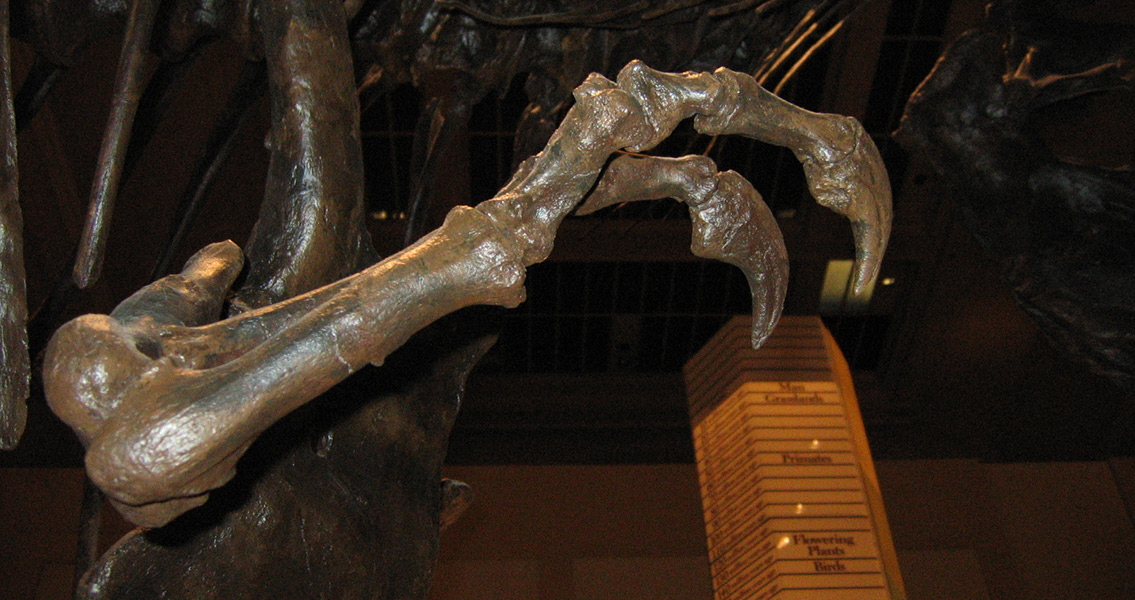<![CDATA[Tyrannosaurus rex-like forelimbs may have evolved a number of times, according to a new study by Sebastián Apesteguía from the Universidad Maimónides, Argentina. The study examined a newly discovered dinosaur skeleton from the Late Cretaceous, found in Argentina, in the rocks of the Huincul Formation. The dinosaur, which has been named Gualicho shinyae, is a new species of theropod. This mid-sized, slender predator, which weighed in at about half a ton, is believed to be related to Deltadromeus, an African dinosaur, as they share several anatomic similarities, yet the newly discovered species exhibits unique features that distinguish it from other theropods. Despite its large size (comparable to a modern polar bear), Gualicho had forelimbs that were the size of a human child's, with claws that were didactyl (thumb and forefinger); more similar to the claws of Tyrannosaurus rex (T. rex), a distant cousin, than more closely-related species. Researchers believe this could indicate that forelimbs of this nature evolved independently, on two different branches of the evolutionary tree, rather than being from a common ancestor. Researchers used phylogenetic analysis to define the new dinosaur’s evolutionary history. Phylogenetics is the study of an individual or group's evolutionary history and their relationships to other species or populations. These relationships are found using phylogenetic inference techniques that assess heritable traits, like DNA sequences and morphology, the result of which is a diagrammatic hypothesis regarding these evolutionary relationships. Phylogenetic analyses are central to understanding evolution, ecology, biology and genomes. Peter Makovicky, co-author of the study, said in a press release: "Gualicho is kind of a mosaic dinosaur, it has features that you normally see in different kinds of theropods. It's really unusual -it's different from the other carnivorous dinosaurs found in the same rock formation, and it doesn't fit neatly into any category." The Patagonian area of Argentina has been shown to have been rich in Late Cretaceous fossils, offering a significant amount of information about the dinosaurs that existed there during the period. Why dinosaurs such as T. rex and G. shinyae had such disproportionate forearms remains a mystery. The function of such seemingly useless forelimbs has perplexed experts and amateurs alike. An initial theory was that T. rex used its arms to hold a mate, others have suggested the arms were used to hold prey in place, (an earlier study hypothesized the arms were capable of maneuvering more than 400 pounds) or to help itself stand up – assuming the dinosaur ever sat. The current theory is that these short forelimbs were, in actuality, totally useless. Researchers are hopeful that learning how these shortened forelimbs evolved may help solve the puzzle. The study has been published in the journal PLOS ONE. ]]>
Useful or Not, T. Rex-Like Limbs May Have Evolved Numerous Times
